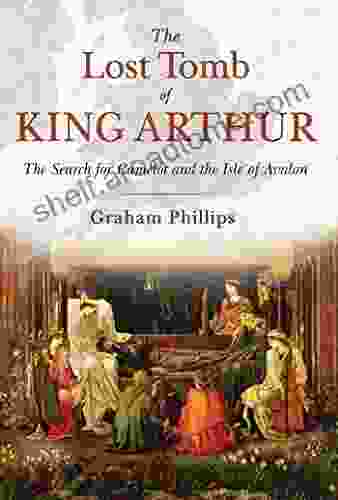For centuries, the legends of Camelot and the Isle of Avalon have captivated imaginations worldwide. These mythical realms, inextricably linked to the tales of King Arthur and the Knights of the Round Table, have inspired countless works of literature, art, and music. But what is the truth behind these enigmatic stories? Did Camelot ever exist? Is there any historical basis for the Isle of Avalon?
In this comprehensive guide, we embark on an extraordinary journey to uncover the secrets of these legendary lands. Through meticulous historical research, archaeological excavations, and literary analysis, we will explore the fascinating evidence that sheds light on the origins, evolution, and enduring legacy of Camelot and the Isle of Avalon.
Camelot: The Court of King Arthur
Camelot, the legendary court of King Arthur, has become synonymous with chivalry, romance, and adventure. According to the Arthurian legends, Camelot was a magnificent castle where Arthur held court, surrounded by his loyal knights. It is said to have been a place of great splendor and prosperity, where the ideals of knighthood were upheld.
However, the historical evidence for the existence of Camelot is scant. There is no definitive archaeological evidence to support the existence of a castle that matches the descriptions given in the legends. Some historians believe that Camelot may have been inspired by real-life fortifications, such as Tintagel Castle in Cornwall or Cadbury Castle in Somerset.
Tintagel Castle: A Possible Inspiration for Camelot?
Tintagel Castle, dramatically perched on the rugged Cornish coastline, is one of the most evocative and atmospheric sites associated with the Arthurian legends. According to Geoffrey of Monmouth's influential 12th-century chronicle, Historia Regum Britanniae, Tintagel was the birthplace of King Arthur. Archaeological excavations have uncovered evidence of a substantial fortification on the site, dating back to the 5th and 6th centuries AD, which suggests that Tintagel may have been a significant stronghold during the time of Arthur's supposed reign.
Cadbury Castle: Another Contender for Camelot?
Cadbury Castle, a hillfort located in Somerset, is another site that has been proposed as a possible inspiration for Camelot. Excavations have revealed that Cadbury Castle was occupied from the Iron Age to the medieval period, suggesting that it was a strategic and important site throughout much of British history. Some historians argue that the natural defenses of Cadbury Castle, combined with its commanding position overlooking the surrounding countryside, make it a likely candidate for the location of Arthur's legendary court.
The Isle of Avalon: The Mystical Island of Healing
The Isle of Avalon, often referred to as the Isle of Apples, is a mythical island that plays a significant role in the Arthurian legends. It is said to be a place of great beauty and healing, where King Arthur was taken after being mortally wounded in the Battle of Camlann. According to the legends, Avalon is also the final resting place of the Lady of the Lake, who gave Arthur the magical sword Excalibur.
The historical basis for the Isle of Avalon is equally elusive. Some scholars believe that Avalon may have been inspired by the island of Glastonbury in Somerset. Glastonbury is home to a number of ancient and sacred sites, including the Glastonbury Abbey and the Glastonbury Tor. The abbey was founded in the 7th century AD, but archaeological evidence suggests that there was a religious settlement on the site long before that. Glastonbury is also associated with Celtic mythology and is said to be one of the gateways to the Otherworld.
Glastonbury Abbey: A Possible Inspiration for Avalon?
Glastonbury Abbey is one of the most important historical sites in England. It was a major center of pilgrimage during the Middle Ages and is said to be the burial place of King Arthur and Queen Guinevere. The abbey was dissolved by Henry VIII in the 16th century, but the ruins remain a popular tourist destination. The Glastonbury Abbey is a fascinating blend of history, legend, and myth, making it a strong candidate for the inspiration behind the Isle of Avalon.
The Glastonbury Tor: A Sacred Hilltop
The Glastonbury Tor is a prominent hilltop that overlooks Glastonbury Abbey and the surrounding countryside. It is said to be the site of an ancient Celtic temple and is associated with various myths and legends. The Glastonbury Tor is a popular destination for pilgrims and tourists alike, and it offers stunning views of the surrounding area.
The Search for Camelot and the Isle of Avalon Today
The search for Camelot and the Isle of Avalon continues to fascinate historians, archaeologists, and enthusiasts alike. New discoveries and research are constantly shedding light on these legendary realms. Whether or not these places existed in reality, they have undoubtedly captured the human imagination for centuries. The stories of Camelot and Avalon continue to inspire and entertain us, reminding us of the power of human dreams and the enduring legacy of our cultural heritage.
Our journey into the search for Camelot and the Isle of Avalon has taken us through a rich tapestry of history, archaeology, and literature. We have explored the enigmatic evidence that surrounds these legendary lands and discovered the enduring fascination they hold for us. Whether they were real places or figments of our collective imagination, Camelot and Avalon continue to captivate and inspire, reminding us of the power of imagination and the endless possibilities of human storytelling.
So, join us on this extraordinary quest to uncover the secrets of these legendary lands. Let us unravel the mysteries of Camelot and the Isle of Avalon, and discover the enduring legacy of these timeless tales.


























































































